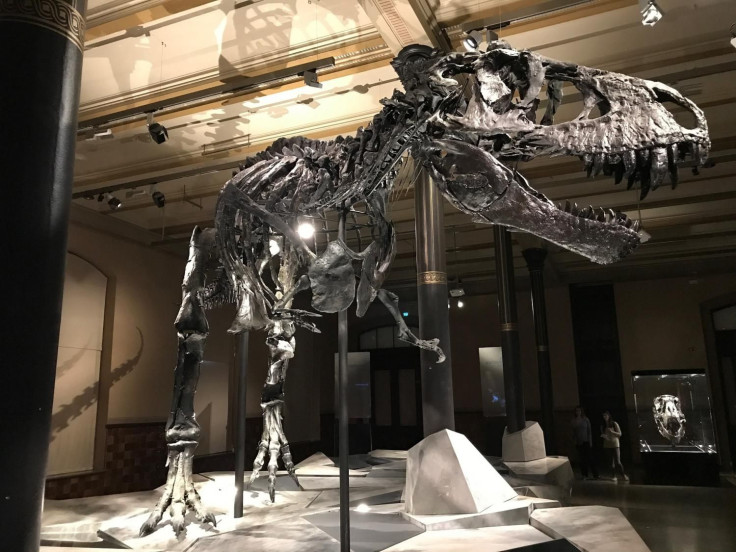During Dinosaur Mass Extinction, Fires Plunged Earth Into Darkness For Years

People viewing the total solar eclipse that cut through the United States on Monday could find comfort in the fact that the shadow the moon cast upon Earth would be brief, that sunlight would eventually push out the dark and life would go on as normal.
The animals that survived the asteroid strike that famously killed the dinosaurs in a mass extinction event 66 million years ago did not have the same luxury. According to recent research, the fire and destruction that followed the asteroid would have cloaked their world in blackness for almost two years.
A study in the journal Proceedings of the National Academy of Sciences describes what happened after the more than 6-mile asteroid crashed down by the southeastern tip of Mexico: Soot choked the atmosphere to create “near-total darkness” that would have prevented plants from performing photosynthesis, the process by which they turn sunlight into energy, and cooled both land and ocean.
“A worldwide layer of soot found at the boundary is consistent with global fires,” the study says. Taken all together, the fires around the world would have created soot in the atmosphere equal to about 15,000 teragrams, a measurement in which each teragram is the equivalent of 1 trillion grams.
That entire 15,000-teragram sum is the same as roughly 33 trillion pounds of soot in the air.
Any creature lucky enough to survive the initial impact of the asteroid may not have been so lucky after all, because between the soot blocking out sunlight and other related effects, it would be facing harsh conditions like something out of a post-apocalyptic movie.
“These conditions last for several years, would have caused a collapse of the global food chain, and would have contributed to the extinction of species that survived the immediate effects of the asteroid impact,” the study says.
It would have been both the asteroid strike and those resulting conditions that added up to the mass extinction event in which three-quarters of Earth’s animals died, including the non-avian dinosaurs.
Those lingering conditions were after the asteroid strike first triggered earthquakes, volcanoes and tsunamis.
The scientists came to their conclusions using climate simulations in which they plugged the soot values. The simulations “produce what might have been one of the largest episodes of transient climate change in Earth history.”
Once the soot is thrown into the atmosphere, the heat from the sun carries it higher and makes it linger longer. “As a result, little or no sunlight reaches the surface for over a year, such that photosynthesis is impossible and continents and oceans cool by as much as 28 °C and 11 °C, respectively.”
That temperature change is the equivalent of the ocean cooling down almost 20 degrees Fahrenheit and land decreasing about 50 degrees Fahrenheit.
At the same time, the upper atmosphere is hundreds of degrees hotter, one of the factors that would destroy the protective ozone layer and allow harmful ultraviolet radiation to reach Earth’s surface.
“Our study picks up the story after the initial effects — after the earthquakes and the tsunamis and the broiling,” study leader and National Center for Atmospheric Research scientist Charles Bardeen said in a statement from the group. “We wanted to look at the long-term consequences of the amount of soot we think was created and what those consequences might have meant for the animals that were left.”
The study could help scientists better understand why certain creatures survived the mass extinction and others did not.

“At first it would have been about as dark as a moonlit night,” researcher Owen “Brian” Toon said in the statement.
The darkness would have primarily affected phytoplankton — because many land plants were already burned to death in the worldwide fires — and the destruction of that key element in the ocean’s food chain would have devastated many other marine species.
The study might also help scientists analyze how something like nuclear warfare would affect the planet.
“The amount of soot created by nuclear warfare would be much less than we saw during the [mass] extinction,” Bardeen said. “But the soot would still alter the climate in similar ways, cooling the surface and heating the upper atmosphere, with potentially devastating effects.”
© Copyright IBTimes 2025. All rights reserved.




















